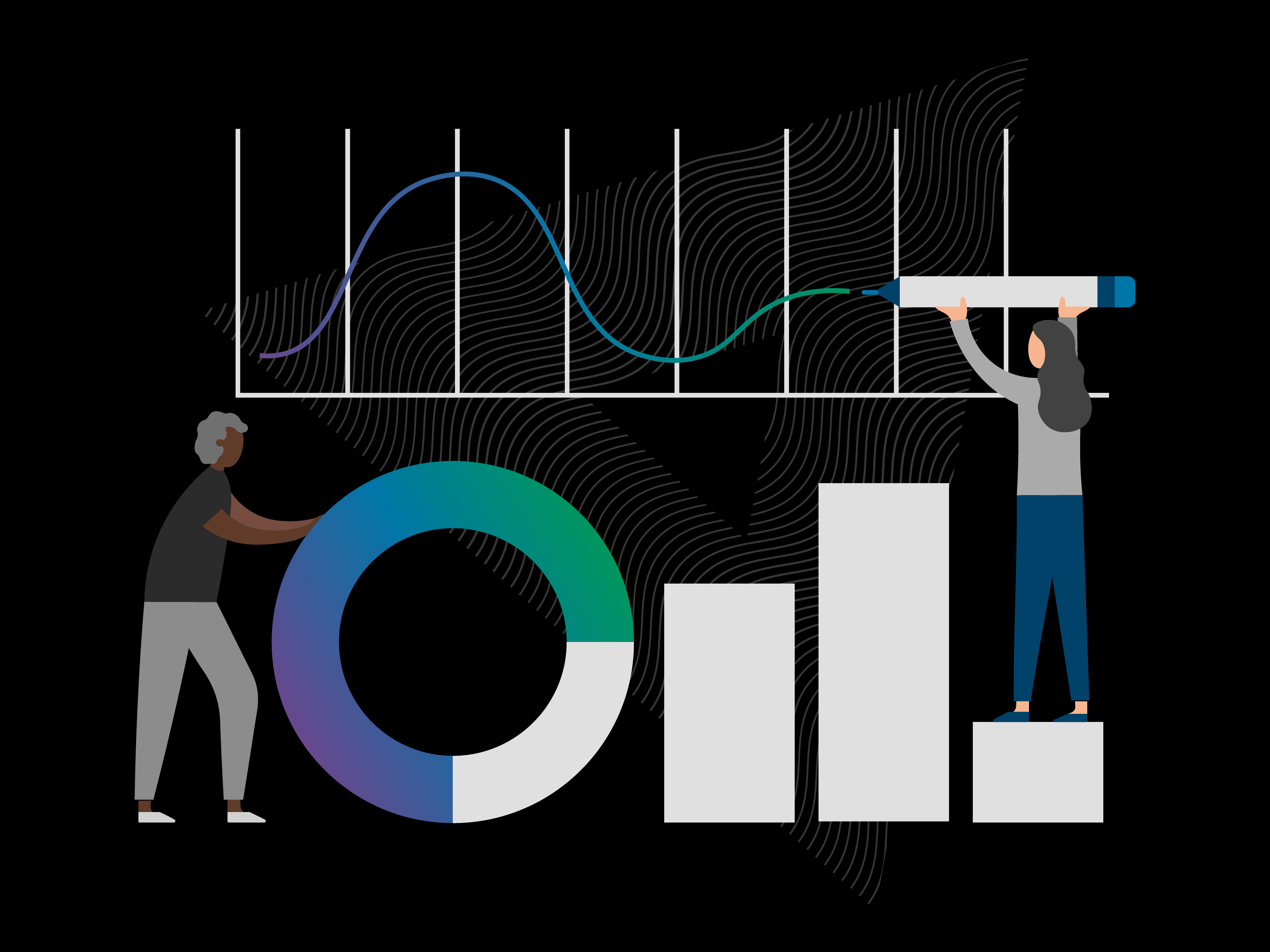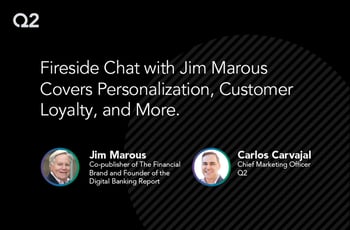So far, 2023 market predictions have been full of speculation. Some see a recession on the horizon. Others expect a “soft landing” later in the year. But no matter what’s in store for the economy, financial institutions (FIs) need to develop strategies to future-proof their business models.
Luckily, we’ve partnered with The Financial Brand Co-Publisher Jim Marous to share his "Retail Banking Trends and Priorities 2023" report and related webinar with you. These resources are chockfull of insights, stats, and guidance to help you understand where the industry is headed, so you can benchmark your strategies against peer institutions.
Now in its tenth year of publishing, the 2023 report features comprehensive global research results from more than 600 financial executives at small and large FIs alike. As these leaders shared their thoughts on 2023 retail banking and credit union trends, some key themes emerged:
• Moving from experience to engagement
• Building a data and analytics foundation
• Collaborating for innovation at speed and scale
• Continuing the transition from physical to digital
Here’s a sneak peek at those themes—and what’s in store in the report and webinar.
Moving From Experience to Engagement
Players across the entire financial services spectrum continue to debate what the banking ecosystem of the future will look like. But one thing’s certain: To acquire and retain business, FIs need to improve customer experience (CX) and engagement. That’s why 87% of senior banking executives rank “improving digital CX” as a top priority for this year.
Consumers judge their FIs on qualities like ease of engagement, responsiveness, transparency, and empathy. It’s up to banks and credit unions to simplify these consumers’ lives by delivering streamlined experiences on the channels they prefer.
The good news: Customers are willing to share their personal information if doing so simplifies future engagement. If FIs can harness that data to predict behavior and personalize engagements, they can drive major customer loyalty. Think targeted product recommendations, humanized digital experiences, and better self-service options.
Building a Data and Analytics Foundation
Speaking of harnessing the power of data … financial institutions will need to be able to leverage data insights quickly—and at scale—to remain competitive and meet customer demands.
It’s not enough for today’s financial marketers to look at traditional transaction and historical sales data. They need to be able to understand buyer intent in real-time, since most prospects and customers are going online to research brands and make buying decisions.
In fact, 91% of marketing leaders say that direct access to customer data provides a significant competitive advantage. Unfortunately, 62% of all marketers are only “moderately confident,” “slightly confident,” or “not at all confident” in their data, analytics, and insights systems.
True differentiation comes when an FI’s data collection and insights are built for immediate action. The very best financial marketing team is the first to adapt and act on real-time insights in an instant. How can they do this? By adopting a modern digital banking platform that helps them bring customers and prospects closer to their brand.
Collaborating for Innovation at Speed and Scale
If they’re going to keep up, financial institutions need to move fast when it comes to digital transformation. One of the best ways to do this is to partner with disruptive fintech firms and third-party tech providers.
The FI leaders surveyed in the report have clearly caught on to this fact, with 60% of them reporting that they’re already meeting customers’ digital banking needs through collaboration with fintech firms and other third-party solution providers.
These third-party fintech providers have the capability to help legacy FIs deploy in-demand digital offerings better, faster, and cheaper than they could on their own. Collaborations with third-party providers can often supplement a bank’s core vendor, delivering the personalized digital experiences customers are looking for with ease.
Continuing the Transition from Physical to Digital
As customers continue to flock to digital channels, it’s little surprise that close to 65% of banking executives believe the branch-based model will be dead within five years. Whether this prediction comes to fruition remains to be seen.
But there are some significant steps FIs can take to optimize their digital transformation initiatives. The goal is to convert customers who are “willing” to use digital channels into those who prefer digital channels—and to design physical channels (branches, call centers) as ideal brand ambassadors for complex, empathy-forward engagement.
True omnichannel delivery of banking services is more than a blend of physical and digital models. It requires seamless integration of insights across all these physical and digital channels working in sync. The secret sauce that makes this work? Effective digital banking, innovative interfaces, virtual assistants—and the ability to leverage all of this technology at the speed needed to meet demand.
Leadership, People, and Culture
The pandemic forced FIs to work quickly and collaboratively to build digital banking solutions. Now, in this time of economic uncertainty, it’s up to these financial institutions to maintain that same commitment to speed, agility, empowerment, and teamwork.
Organizations have to rethink what it means to be a digital bank, and what it means to be customer-centric. Times of economic disruption are perfect opportunities to reset your mission, purpose, and value propositions. In the words of Jim Marous, “This is the time to determine what your organization will be known for.”
The connection between employee engagement and customer experience can’t be ignored here. Interestingly, companies that effectively organize and manage customer experience can realize a 20% improvement in customer satisfaction and a 30% increase in employee engagement.
To learn more, be sure to download your copy of the "Retail Banking Trends and Priorities 2023" report. And register today for Jim Marous's livestreamed webinar, "2023 Retail Banking Trends Deep Dive."


.jpg?width=100&height=100&name=GinnyPerkins_Headshot_lowres%20(002).jpg)

